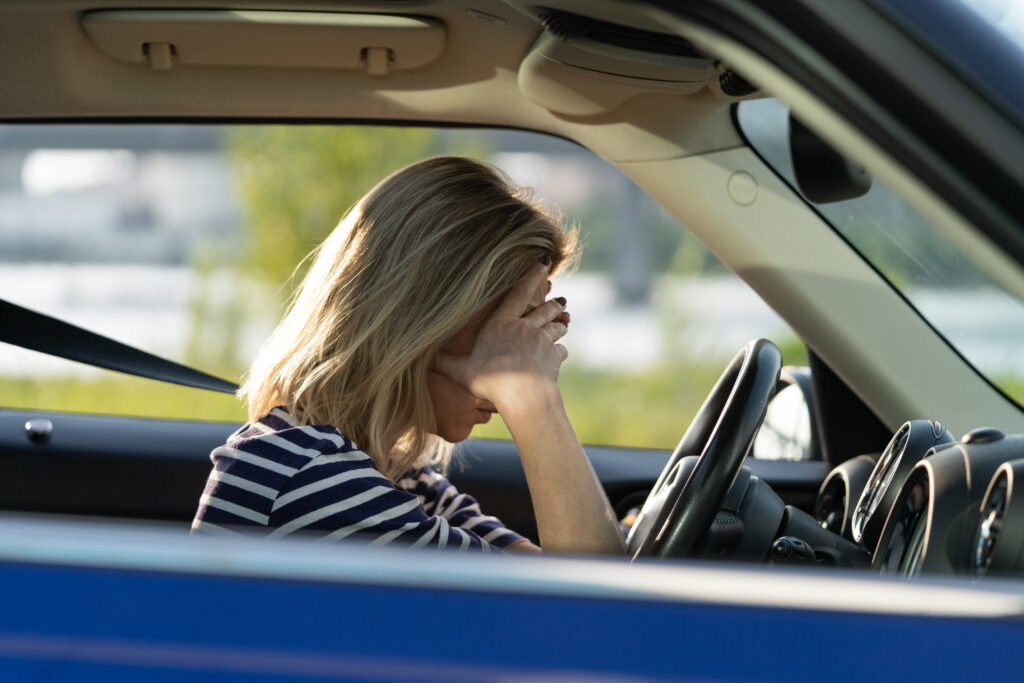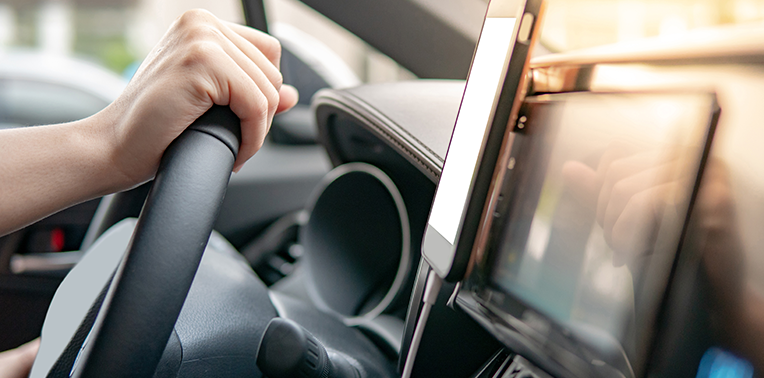Getting in a car accident can really shake up your world. Your insurance premiums can increase, and you might be without wheels for a while if your car needs repairs. That’s not even mentioning the injuries you might face that may keep you from earning a living.
That’s why it’s essential to know what to do after a car accident. Prepared, you can handle the aftermath with care and ensure the best possible outcomes. It still won’t be fun to deal with, but at least you can get off on the right foot and minimize potential downsides. We’ve made this blog to share the important dos and don’ts of car accidents in a helpful step-by-step guide.
Secure Kids, Pets, Seniors and Disabled Individuals
Anytime someone asks you what to do first in a car accident, the answer is to ensure the safety of all passengers. The health and safety of yourself, your family, friends and even your pets is more important than anything else.
Before you exit the vehicle to talk with the other driver, make sure to ask everyone in your car if they’re okay. If there are children, pets, seniors, or disabled individuals in the vehicle – in other words, passengers who may need assistance taking care of themselves – make sure they are secure and safe.
Check for Injuries and Move to a Safe Area
Car accidents often send adrenaline coursing through your veins. This can mask injuries. You may feel perfectly fine, but as soon as the adrenaline wears off your pain receptors will tell you that you’re anything but fine. That’s okay if you’re just a little banged up, but if the adrenaline is hiding broken bones, cuts or serious injuries, you don’t want to wait for pain to tell you that there’s a problem.
Do a visual assessment of each person in your car to make certain that nobody is seriously hurt. If they are, don’t try to move them yourself, as this can worsen the situation. Instead, call for medical help immediately.
If your car is still operable and you’re able to drive, now is the time to move your vehicle off the road. Doing so helps to prevent other accidents and ensures unsuspecting drivers don’t rear-end or side-swipe your car, which can make an already challenging situation even worse.
Contact 911
Calling 911 to request medical help and police presence is Car Accident 101. First responders can help:
- Redirect traffic
- Clear debris
- Treat injuries
- Preserve evidence
- Provide emotional support
- Generate an official record of the incident
The police record is valuable when dealing with insurance claims, legal actions or investigations, so be sure to request a copy of this from the police officer. The information they document can serve as an objective account of the accident and help establish the facts surrounding the event.
Exchange Information
Now that you’ve seen to your passengers, addressed injuries and moved your car off of the road, what happens next after a car accident?
For smooth insurance claims, liability determinations and legal documentation, it’s necessary to exchange information with the other driver. The information you collect should include names, insurance information (policy number and insurer’s phone number) and the other driver’s telephone number. Gather contact information from any witnesses present as well.
Once you have the information you need, it will be easier to communicate with all parties involved and help law enforcement generate reports. This step is essential for effective post-accident procedures and resolving potential disputes.
Avoid Roadside Discussions About Responsibility
After a car accident, your first instinct might be to assign blame to yourself or the other driver. While that’s completely understandable, it’s important to avoid saying “I’m sorry” or admitting fault in any way when speaking with the other driver or police. They may try to use it against you with insurance claims and legal proceedings – even if the police report or investigation actually shows that you’re not at fault.
Engaging in discussions about responsibility can also escalate tensions and prevent proper handling of the situation. It’s best to let the appropriate authorities and insurance professionals determine fault based on evidence and legal guidelines. You’d be surprised how often drivers think they’re 100% at fault but the final verdict either finds them only partially at fault or not at all – both of which seriously alter financial responsibility of the accident.
Get a Copy of the Police Report and the Officer’s Badge Number
After an accident, request a copy of the police report, report number and the name and badge number of the officer. In most cases the officer should print this for you at the scene, but you can also request this after the fact.
The police report is an official, objective account of the accident that documents key details, statements from involved parties and witnesses. It plays a significant role in insurance claims and legal proceedings because it provides an accurate record of the incident.
With access to the police report number and officer’s information, you can follow up on the report’s status and request copies for insurance. The officer’s details also allow for contact in case additional questions or information arise after the accident.
Don’t Make Deals About Damage Payments
Avoid making private deals to cover damage payments until you’ve had a professional assessment of the full damages. There may be hidden or delayed damages that aren’t immediately apparent, and any deals made prematurely could lead to insufficient compensation. Additionally, agreements made in the heat of the moment are not legally binding, which makes them difficult to enforce later on.
On top of that, insurance companies may need to assess the damages themselves to determine coverage accurately. Making private agreements can complicate the claims process and result in disputes over responsibility and payment.
In most cases, it’s best to let insurance companies handle the evaluation and settlement of damages. This ensures fair and proper compensation while adhering to legal procedures.
Document the Crash
Document the accident thoroughly before cleaning up the accident or leaving the scene. Documentation strengthens your position when dealing with insurance companies, authorities and potential legal disputes. It provides a clear and accurate representation of the events and damages involved.
Take photos of all damages to your vehicle and the other driver’s car, including their license plate. If possible, create a diagram illustrating how the accident occurred, including the directions of travel for each vehicle involved. Diagrams of the accident’s sequence and vehicle directions aid in clarifying the collision dynamics. They can help establish the extent of damages, the circumstances of the accident and who was at fault.
It’s a good idea to note the date, time and location of the accident and create a chronological record for future reference. Personal notes about what happened, road conditions and vehicle speeds contribute to a comprehensive account of the incident. Thorough documentation like this provides invaluable evidence for insurance claims and legal proceedings.
Call a Tow Truck if Needed
Any vehicles that are no longer safe to drive will need to be hauled away for repairs by a tow truck. If you continue to drive a damaged vehicle you can cause additional problems that increase repair expenses. A tow truck can also start your repairs sooner and give you peace of mind that your car is in capable hands.
Contact the DMV if Necessary
Considering the lengthy list of everything you need to do after a car accident, contacting the DMV may not even come to mind. However, in certain jurisdictions, it may be necessary to contact the Department of Motor Vehicles (DMV) after a car accident.
Reporting accidents to the DMV can help keep accurate records of accidents. This is vital for insurance claims, legal proceedings and identifying uninsured drivers. Moreover, an official DMV report can aid in impartial accident investigations, future legal matters and assessing driver responsibility.
Before you close the chapter on your car accident, check local regulations or consult a local authority to determine whether DMV notification is necessary for your situation.
Start the Claims Process
After you’ve handled everything at the site of the accident, it’s time to determine whether your damages and injuries justify an insurance claim. This can help you decide whether it’s worth pursuing a claim based on your deductible and coverage.
If you proceed with filing a claim you’ll need to contact your insurance company, let them know what happened and give them the documentation you collected. Initiating the claims process promptly and thoughtfully ensures you receive the appropriate assistance, compensation and support.
Notifying your insurance provider allows them to begin the assessment and investigation process while the details are still fresh. This helps expedite the resolution of your claim and ensures it’s handled accurately and efficiently.
Will my insurance rates go up after an accident?
The impact of a car accident on your insurance rates depends on a few factors:
- If you’re at fault or the accident is severe, rates are more likely to increase due to higher perceived risk.
- The frequency of claims and time since the accident can influence rate changes.
- Insurance companies’ policies, your driving history, the type of coverage you have, and state regulations also play a role.
Consult your insurance provider for specific details. Rates might not change immediately and could vary between insurers. Shopping around for quotes could help you find better rates if needed.
How will insurance pays out after an accident?
After an accident, insurance will pay out based on your coverage type, policy details and who is at fault. If the fault is yours, you’ll use your collision coverage to repair your vehicle. If the other driver bears the blame, their liability coverage will cover repairs.
Please note that there are coverage limits and that deductibles apply. After you’ve filed a claim and had a vehicle assessment, insurance will issue a check or pay the repair shop directly.
In the event that your car is totaled, insurance will send a check for the car value minus deductible costs. Within the limits of the coverage, your medical bills may also be covered under personal injury protection. If insurance coverage is insufficient, you may be able to take legal action.
The Costs of Distracted Driving Accidents to Employers
Distracted driving accidents can have a detrimental financial impact on employers with fleets. There are immediate costs like property damage and legal fees, but the company may also experience a productivity decline, disruption to operations, increased insurance premiums, reputational damage and decreased employee morale. The financial toll can also worsen due to legal fees, training costs, vehicle repairs or replacements, regulatory fines and missed business opportunities.
To avoid these costs, employers can:
- Implement and enforce strict driving policies
- Provide comprehensive driver training
- Monitor drivers to identify high-risk individuals before accidents take place
Mobile Workforce Accident Prevention
Motus is proactive about mobile workforce accident prevention and fleet accident management with comprehensive solutions that address road safety. Our comprehensive safety solution, Drive Safe, addresses every aspect of accident prevention for mobile workers. This includes:
- Proactive driver safety training with risk assessment and video-based modules to improve driving skills.
- Motor vehicle record (MVR) monitoring to identify high-risk drivers.
- Insurance verification to ensure compliance with insurance requirements.
By integrating these components, Motus equips employers with the tools needed to maximize employee safety, reduce liability and protect their workforce.
In the pursuit of a safe driving culture, Motus also supports Distracted Driving Awareness Month. This initiative, typically observed in April, underscores the critical need to address distractions on the road. Just as Motus’s Driver Safety Training program focuses on reducing risk, Distracted Driving Awareness Month aligns perfectly with this mission.
Learn More About Our Drive Safe Program
Returning to the Road
In the aftermath of a car accident, following the step-by-step approach we’ve outlined here can significantly improve your outcomes. Knowing what to do when you get into a car accident will help you confidently navigate the aftermath, make informed decisions and preserve your interests.







